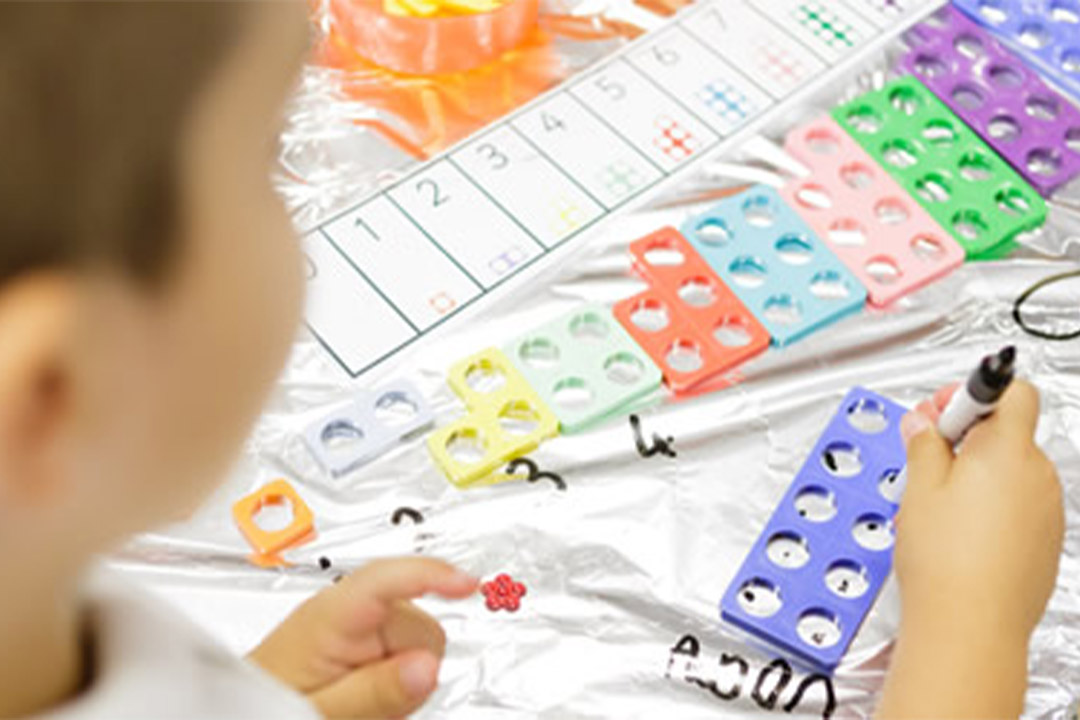Comparison
Understanding that comparing numbers involves knowing which numbers are worth more or less than each other

Comparing numbers involves knowing which numbers are worth more or less than each other. This depends both on understanding cardinal values of numbers and also knowing that the later counting numbers are worth more (because the next number is always one more). This understanding underpins the mental number line which children will develop later, which represents the relative value of numbers, i.e. how much bigger or smaller they are than each other.
Typical progression of key ideas in this concept
Children need progressive experiences where they can compare collections and begin to talk about which group has more things. Initially, the groups need to be very obviously different, with one group having a widely different number of things. Collections should also offer challenges, such as including more small things and fewer large things, to draw attention to the numerosity of the comparison, i.e. the number of things, not the size of them.
Activities and opportunities:
- collections for children to sort and compare, which include objects which are identical, and which include objects of different kinds or sizes
- collections with a large number of things, and collections with a small number of things.
Children need the opportunity to see that groups could consist of equal numbers of things. Children can check that groups are equal, by matching objects on a one-to-one basis.
Activities and opportunities:
- ensuring that when providing groups to compare, there are some that have an equal amount
- asking children to convert two unequal groups into two that have the same number, e.g. ‘There are 6 apples in one bag and 2 in another bag; can we make the bags equal for the two hungry horses?’
Children need opportunities to apply their understanding by comparing actual numbers and explaining which is more. For example, a child is shown two boxes and told one has 5 sweets in and the other has 3 sweets in. Which box would they pick to keep and why? Look for the reasoning in the response they give, i.e. ‘I would pick the 5 box because 5 is more than 3 and I want more.’ If shown two numerals, children can say which is larger by counting or matching one-to-one.
Children can compare numbers that are far apart, near to and next to each other. For example, 8 is a lot bigger than 2 but 3 is only a little bit bigger than 2.
Activities and opportunities:
- explain unfair sharing - 'This one has more because it has 5 and that one only has 3'
- compare numbers that are far apart, near to, and next to each other.
Children need opportunities to see and begin to generalise the ‘one more than/one less than’ relationship between sequential numbers. They can apply this understanding by recognising when the quantity does not match the number, i.e. if a pack is labelled as 5 but contains only 4, the children can identify that this is not right. Support children in recognising that if they add one, they will get the next number, or if one is taken away, they will have the previous number. For example: ‘There are 4 frogs on the log, 1 frog jumps off. How many will be left? How do you know?'
Activities and opportunities
- labelling groups with the correct numeral. Do children spot the error if a group is mislabelled? For example, 'The label on the pot says 4 and we have 5 – what do we need to do?’ A child may say, ‘We need to take one out because we have one too many.’
- ensuring children focus on the numerosity of the group by having items in the collection of different kinds and sizes
- making predictions about what the outcome will be in stories, rhymes and songs if one is added to, or if one is taken away.
- children not comparing the numerosity of the group and considering more in terms of size
- children giving a response that does not match the context when estimating a number; e.g. when adding, giving as an answer a number that is smaller than the numbers given. Example: ‘There are 7 cars in a garage and then 2 more go in.’ The child guesses there are 4 cars in total inside.
Can a child:
- state which group of objects has more? Can they do this with a large or small visual difference?
- compare two numbers and say which is the larger?
- predict how many there will be if you add or take away one?